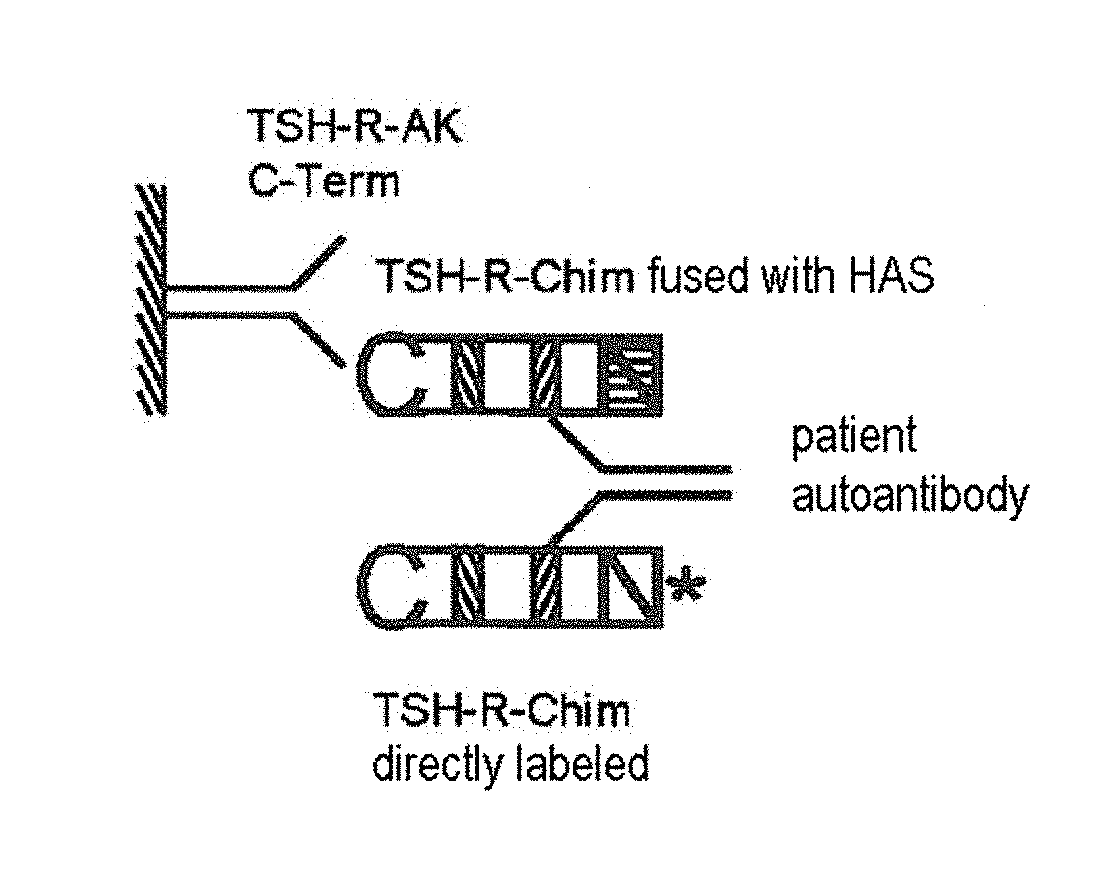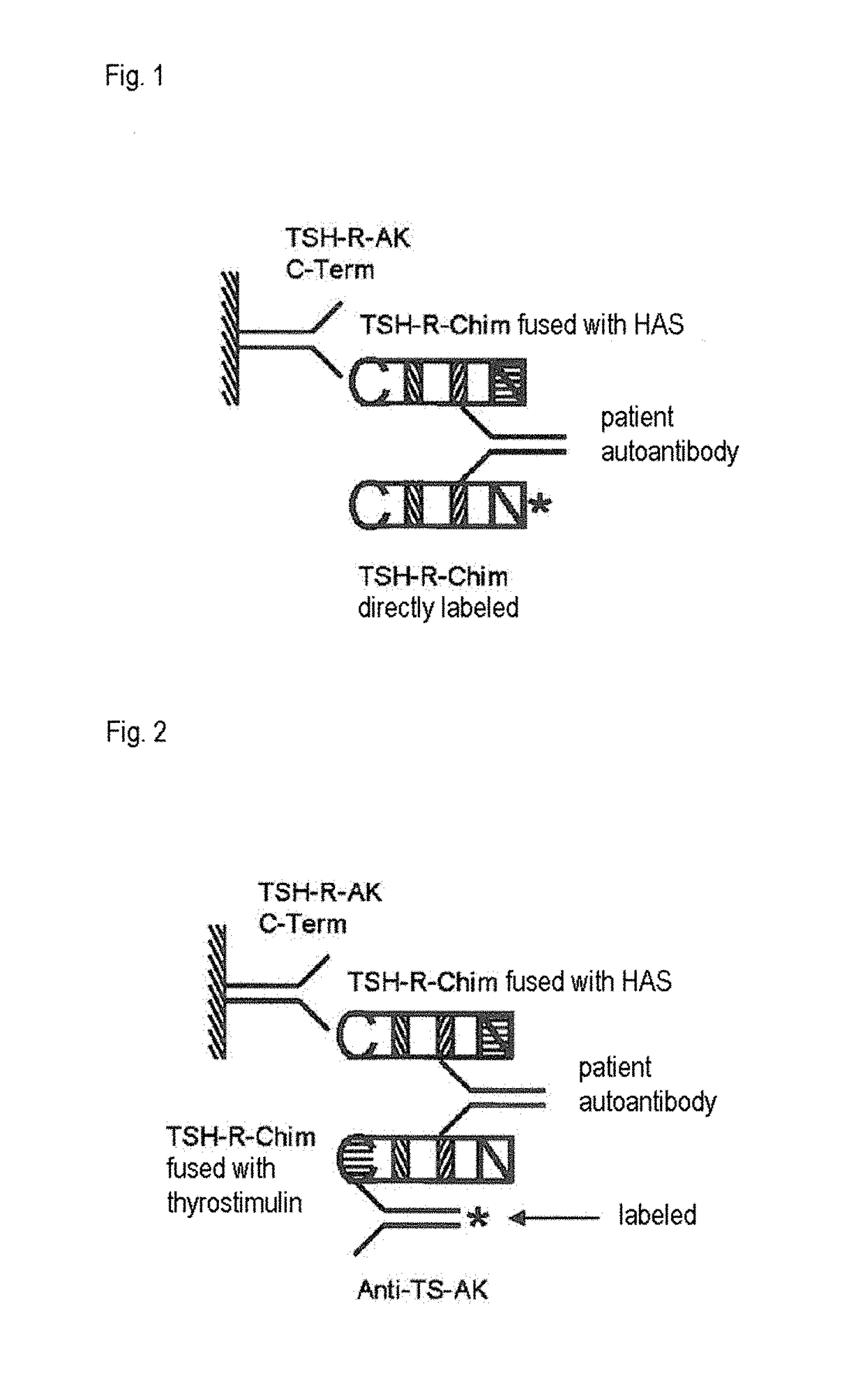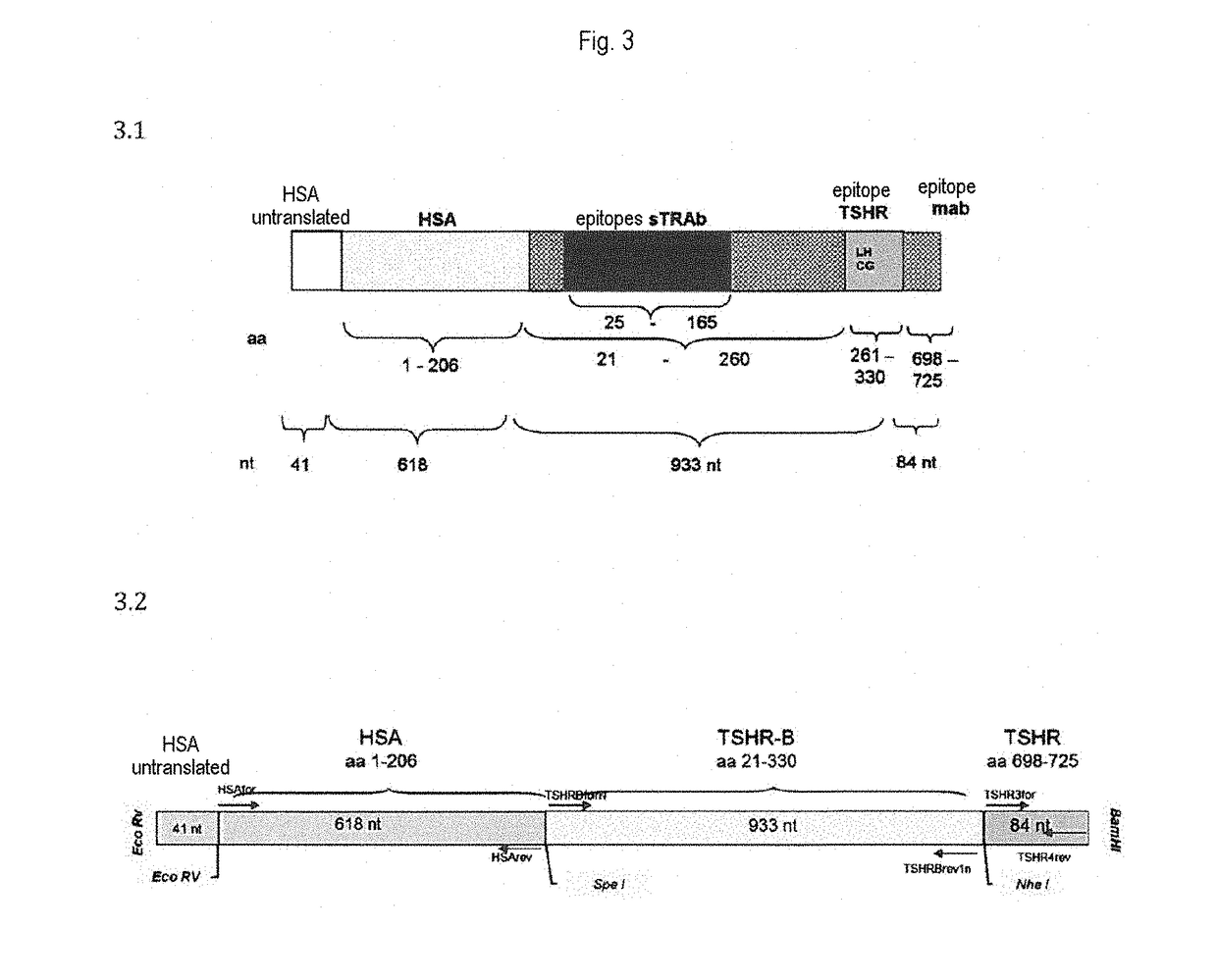Detection of autoantibodies against the tsh receptor
a technology of autoantibodies and thyroid hormone, which is applied in the field of detection of autoantibodies or autoimmune antibodies against the thyroid hormone receptor, can solve the problems of hypofunction of the thyroid, high measurement cost, and high storage cost, and achieve high assay stability, high storage stability, and transport stability
- Summary
- Abstract
- Description
- Claims
- Application Information
AI Technical Summary
Benefits of technology
Problems solved by technology
Method used
Image
Examples
example 1 (
Obtention of the TSH Receptor Chimeras)
Materials
[0060]For cloning the TSH receptor chimeras, the plasmid pcDNA3-rLHR (B9) from Dr. D. L. Segaloff (The University of Iowa, USA) was used.
[0061]The TSH receptor chimera in which a part sequence is replaced by a corresponding sequence of a rat LH-CGR was constructed according to the description in Biochem Biophys Res Commun. (1991), 179: 70-77. In this, the TSHR amino acids 261 to 370 were replaced by the comparable amino acids 261 to 329 of a rat LH-CGR.
[0062]The TSH receptor chimeras according to the invention and their wild type variant was produced by normal cloning methods with normal reagents.
Expression and Obtention of Fusion Proteins HSA2-TSHR ECD-B-330-mAb1 or TSHR / LH-CGR-SEAP as Cell Extract
[0063]Confluent stable CHO-K1 and HEK293 cells respectively are grown in plates. The supernatant (about 8 mg / ml total protein) was collected and kept at −70° C. The supernatant thus obtained can be used in determination methods as HSA2-TSHR ...
example 2 (
Performance of the Test According to the Invention)
[0067]Serum or plasma samples are produced from venous blood within 3 hours. Storage at 4° C. for a period of 7 days or at −20° C. for 1 to 2 years possible. Secondary antibodies (see above) are kept at −20° C. and thawed at room temperature before use in the test. TSH receptor chimeras are stored lyophilized on microtiter plates and reconstituted in buffer with protein stabilizers before use.
[0068]Per 2 ml reaction vessel, 30 μl of a solution containing 20 mg / ml Dynabeads® coupled with anchor receptor in washing buffer (PBS pH 7.4, 0.1% BSA) are diluted with 50 μL. After addition of 50 μl serum or plasma from the patient sample, the reaction vessel is incubated for 10 minutes at 37° C. with vigorous shaking. Next several washing steps are performed with activation / deactivation of the magnet as previously described, with 1 ml washing buffer each time. After addition of 100 μl of a solution of a signal receptor according to the inven...
PUM
| Property | Measurement | Unit |
|---|---|---|
| Fraction | aaaaa | aaaaa |
| Paramagnetism | aaaaa | aaaaa |
Abstract
Description
Claims
Application Information
 Login to View More
Login to View More - R&D
- Intellectual Property
- Life Sciences
- Materials
- Tech Scout
- Unparalleled Data Quality
- Higher Quality Content
- 60% Fewer Hallucinations
Browse by: Latest US Patents, China's latest patents, Technical Efficacy Thesaurus, Application Domain, Technology Topic, Popular Technical Reports.
© 2025 PatSnap. All rights reserved.Legal|Privacy policy|Modern Slavery Act Transparency Statement|Sitemap|About US| Contact US: help@patsnap.com



